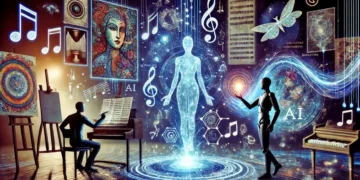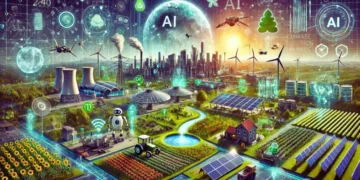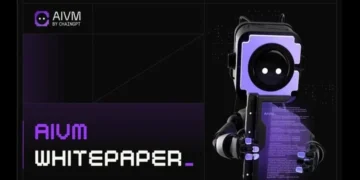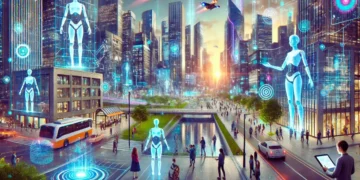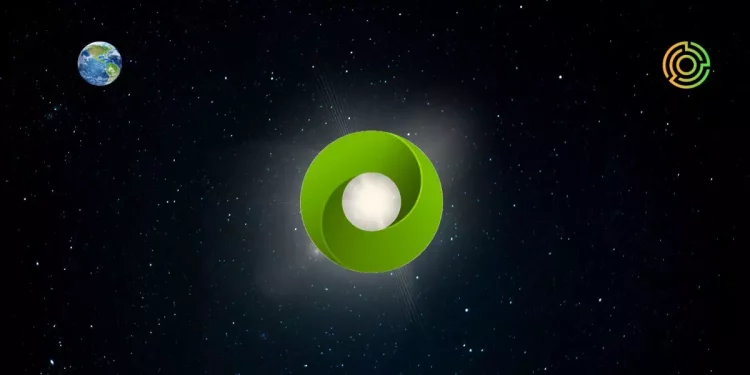Nvidia’s new platform updates position Omniverse as an ecosystem empowering developers, creators, and companies to build expansive 3D simulations and virtual worlds. Integrations with generative AI, expanded collaborative capabilities, and strategic partnerships aim to make complex metaverse development dramatically more accessible.
As a technology copywriting expert, I analyze how enhancements to the Omniverse platform, underpinned by artificial intelligence and Nvidia’s GPU computing power, promise to transform digital worldbuilding and industrial digitization.
Omniverse as an Open Unified Platform
At its core, Omniverse provides the connective fabric linking together 3D design tools into a shared ecosystem. Rather than siloed apps, it enables collaborative, multi-app workflows.
The latest Omniverse release takes unified ecosystem capabilities further by introducing USD Composer for large-scale scene assembly and new Audio2Face AI for realistic facial animation.Extending connectivity, Omniverse now seamlessly integrates with auxiliary 3D platforms like Houdini and Cesium.
Major #NVIDIAOmniverse release now available, offering new foundation apps and services for developers and industrial enterprises to optimize and enhance their 3D pipelines with the #OpenUSD framework and #GenerativeAI.#SIGGRAPH2023
— NVIDIA Omniverse (@nvidiaomniverse) August 8, 2023
By reducing friction linking modeling, simulation, and collaboration tools, Omniverse aims to make creating expansive industrial and consumer metaverses scalable.
Generative AI Lowers Barriers to Metaverse Building
A key theme across many Omniverse updates is leveraging artificial intelligence, especially generative AI, to expand what’s creatively possible for developers.
Powerful autoregressive language models like Anthropic’s Claude can write intelligent programs to assist worldbuilding. Other AI systems can generate materials, objects, textures, and audio tailored to creative needs.
Nvidia is democratizing these AI capabilities through Omniverse Nucleus cloud services. By automating complex tasks, AI opens virtual world creation to a wider audience beyond just technical specialists.
New GPUs Streamline Creative Workflows
To further improve 3D design capabilities, Nvidia unveiled three new RTX workstation GPUs optimized for graphics-intensive workflows.
The RTX 5000, 4500, and 4000 models provide performance uplifts for applications like Omniverse, bringing advanced experiences like real-time ray tracing to professional metaverse development.
Combined with Omniverse’s expanded platform capabilities, these GPUs aim to remove bottlenecks, allowing creators to focus on bringing imaginations to virtual life.
Alliance for OpenUSD Spurs Metaverse Interoperability
No company can realize the open metaverse alone. To that end, Nvidia has joined the Alliance for OpenUSD, aligning with Adobe, Apple, Meta, and others to advance USD as a universal scene description framework.
Shared 3D scene standards like OpenUSD are critical for transporting digital assets between platforms and building interconnected metaverse experiences.
Nvidia’s strategic commitment to open ecosystems bodes well for the future interoperability needed to prevent platform lock-in as immersive technologies mature.
Conclusion
With enhancements across collaborative tools, AI integration, GPU hardware, and open standards, Nvidia’s Omniverse strengthens its position as a nexus empowering the next generation of virtual worlds.
Still early stages, it provides a framework for companies and creators to collectively turn the metaverse from speculative sci-fi concept into practical reality in the coming years through meaningful collaboration.
Get the ultimate guide for understanding the metaverse and its importance
FAQs
How does Omniverse simplify metaverse building?
It connects various 3D tools into a shared platform for more seamless collaborative workflows at scale rather than siloed apps and data.
Why is AI important for Omniverse?
It provides automation to assist in asset generation, simulation, programming, etc. This opens the possibility of creating expansive metaverses to those without advanced technical expertise.
What hardware runs Omniverse simulations?
Nvidia RTX GPUs like the new RTX 5000 series provide the intensive parallel processing required for physics, graphics, and AI within complex 3D Omniverse environments.
How does Omniverse enable open ecosystems?
Joining the Alliance for OpenUSD shows commitment to open standards for transporting 3D assets between platforms. This prevents vendor lock-in as technologies mature.
When will Omniverse be ready for consumers?
It remains geared toward developers, creators, and enterprises. But consumer metaverse applications built using Omniverse tools could arrive within 5 years as the infrastructure and devices improve.
Follow us on our social networks and keep up to date with everything that happens in the Metaverse!
Twitter Linkedin Facebook Telegram Instagram Google News Amazon Store

